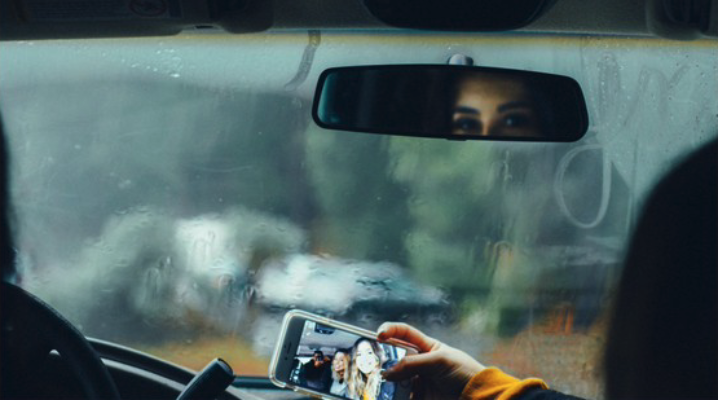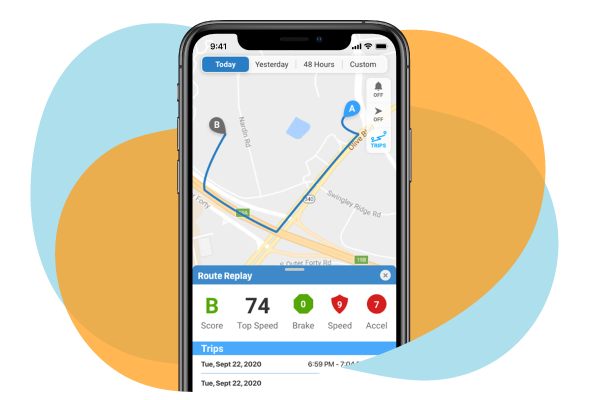
By Janine Brownridge / Posted May 3, 2018
3 Ways to Curb Your Phone Addiction for Safe Driving
Name something that you can’t go a day without and having your phone is sure to be a top response. Our phones are a part of our everyday lives. We use them as our morning alarms, GPS routes, music library, and to keep in touch with everyone around us. Our phones are usually the first thing we look at when we wake up and the last thing we check before going to sleep. With cellphones being so ingrained into every aspect of our lives, it’s easy for someone to become addicted to it.
Having the urge to check your phone is normal these days. It even warrants a psychological response that we often don’t even realize. Our dopamine levels rise when we receive texts, social media notifications, etc. that our brains get pleasure out of checking the phone and urge us to satisfy that. In a recent survey taken in 2016 by teens and their parents, 50% of teens felt that they were addicted to their cellphones and 59% of the parents agreed to this being the case. In this same survey, 80% of teens stated that they check their phones hourly and 72% felt the need to respond to messages immediately.
Pop Quiz: Do you feel the need to answer a text or acknowledge a notification as soon as it pops up? Do you check your phone in the morning before even getting out of bed? Do you text or use your phone excessively while behind the wheel? If you’ve answered yes to any of these questions, it’s possible that you’re addicted to your phone. If you do have a slight phone addiction, it’s important to keep that habit off of the road. Here’s some tips to curb your phone addiction and instill safe driving habits for teens.
1. Out of Sight, Out of Mind
As the old saying goes, if something is out of your sight, it is more likely to be out of your mind as well. The same goes for phone usage. The further you are from your phone, the least likely you are to use it, especially when you’re driving. To avoid distractions from your phone, turn off sound notifications, place it on do not disturb, and place it in the glove compartment or your purse. Put your phone anywhere where you will be less inclined to reach for it and use it while behind the wheel.
2. Silence is Golden
The movie theatre isn’t the only place where silencing your cell phone is necessary; this rule can work for driving as well. Hearing incoming phone/FaceTime calls or text messages are distracting. There is an obligation to check it right away because of the possibility of it being important. In reality, that missed notification is not worth your life to check it while driving. Make sure to change your phone to silent settings before leaving your destination so that the temptation to reach for your phone is no longer there.
Learn how to Prevent Road Rage in Teens
3. Turn Off Notifications
For those of us who use our phones for GPS purposes or to play music, invest in a phone holster first. Next, turn off the notifications for anything on your phone that may pop, such as messages, phone calls, or social media apps. When notifications from these type of apps drop down from the top, it tempts us to read it right away which takes our attention away from the road. If it’s not a quick navigation alert, then it’s not worth the risk to sit behind the wheel and read it while on a drive.
Teaching Your Teen Defensive Driving Skills
Once you put these methods into practice, it will become a habit that turns into second nature. Practicing these safe driving habits is also a good way to set an example to your peers or your children. Distracted driving is a rising problem within all age groups. We can stop this by putting our phones down and giving our full attention to the road.

- Installs in seconds
- Rates driver performance
- Monitors safe driving behaviors
- Shows location in real time
- Generates alerts for speeding and more
- Signals unauthorized usage

Next Post
Top 3 Risks for Teen Drivers
January 5, 2021In 2019, car accidents were the third highest cause of death in the United States. Teen drivers, aged 16 to 17, are the age group with the highest…
Previous Post
MOTOsafety Saves the Day in Theft Case
October 17, 2017When car theft occurs, our first step may be to panic. Our next action is to call the police in hopes that a description of the car will be enough…


